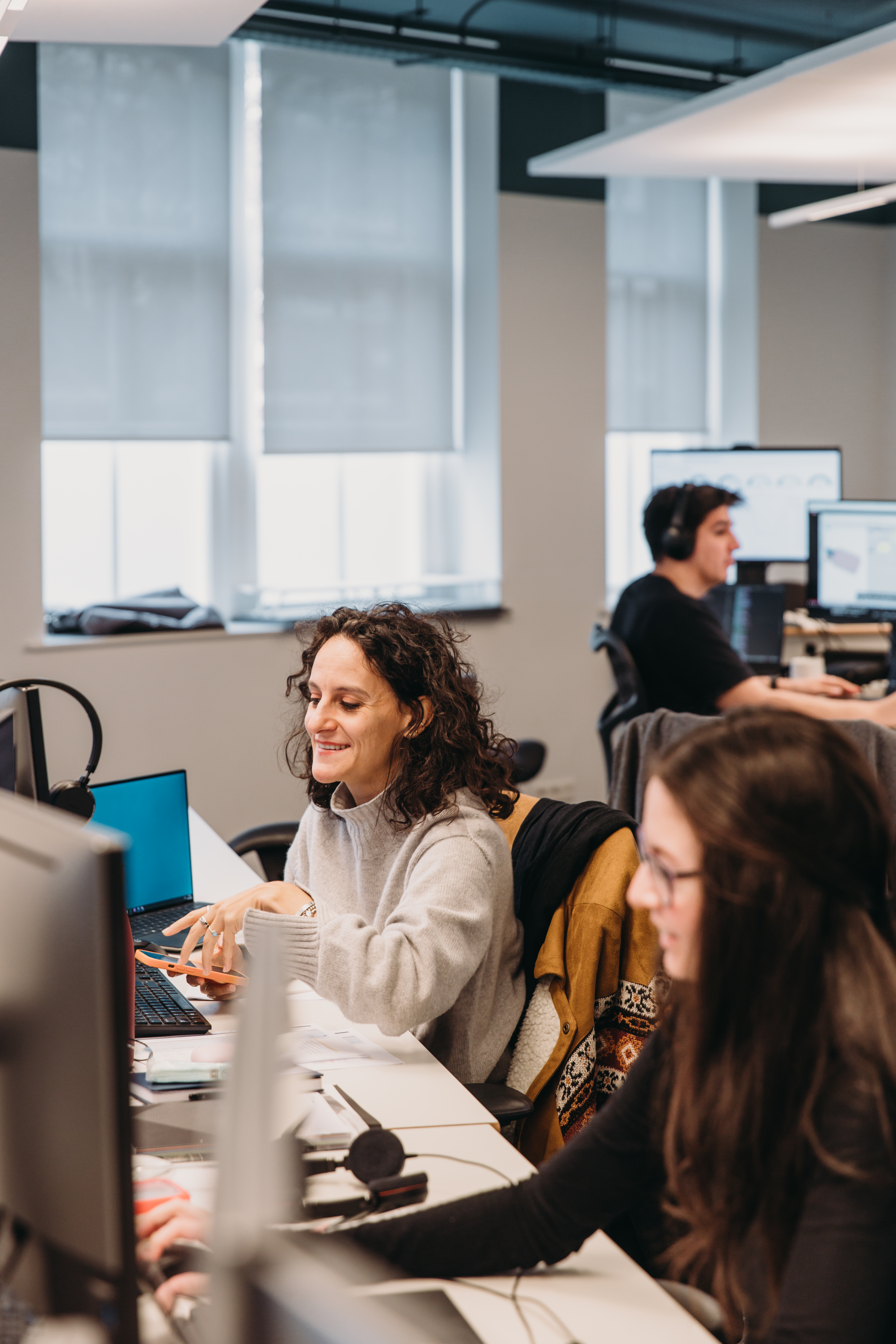Article,
June 10, 2020
Designing Sustainable Transport Hubs for our Post-Covid Future
:format(webp))
As we move towards a post-Covid society, a new era of travel is upon us. Conversations about mobility and sustainable transport are now more crucial than ever – and architects have to be part of them.
In rebuilding post-Covid, mobility is now a critical topic. As the world slowly opens up again, numerous cities have announced measures that support rebuilding with green, sustainable approaches; Milan is implementing new cycling and walking schemes; Bogata in Colombia has turned many streets into traffic-free zones; Barcelona is increasing its pedestrian areas. These are just a few examples, but all of them are intended to allow people to move around urban spaces more safely and sustainably.
While towns and cities start to introduce local initiatives, big question marks still surround the future of international travel in particular.
Environmental concerns had already made the need for sustainable alternatives to air travel imperative, but the pandemic has hastened the shift towards really exploring them.
:format(webp))
This week, Amsterdam Schiphol Airport announced it is expanding its involvement in the hyperloop, a sustainable mode of transport where magnetic hovertrains travel through air-free tubes at up to 1,000km per hour – a speed comparable to airplanes, but with no CO2 emissions.
The announcement comes with the release of an expanded study into the feasibility of the project, led by Dutch tech startup Hardt Hyperloop and Schiphol Airport.
According to the research, which UNS supported, the Hardt Hyperloop could substitute up to 12.5 million passengers travelling via Schiphol to the main neighbouring airports in Germany, Belgium, France and the UK by 2050.
UNS first partnered with Hardt Hyperloop in 2018 to create a vision for the future of European Hyperloop stations, and a study of how this mode of transport can incorporate itself into cities and towns of different sizes and contexts.
We envisioned that the stations would use a series of tessellating components, allowing them to adapt to a range of contexts: city-centre, city periphery or joint to an existing infrastructural hub, such as an airport.
:format(webp))
Using solar energy and producing zero carbon emissions, the hyperloop system provides incredibly fast connections between cities. As an example, the journey from Amsterdam to Frankfurt, would take 51 minutes –about 15 minutes less than the time of a direct flight. This high-speed travel alternative would enable completely new ways of working and spending our leisure time, which in turn will lead to a multitude of economic, environmental and knowledge exchange benefits. It also brings possibilities for shortening food supply chains, enabling fresh produce to be picked and delivered across continents within hours, and for medicine, especially in situations where time is a crucial factor.
In all, it has the potential to revolutionise travel and transport. But this is also just one mode of transportation that can be used in the social ecosystem to keep people moving.
In general, smart and sustainable transport modes and hubs can help people live healthier lives. This is something UNS has long believed and used in our approach to designing for infrastructural projects.
Let’s consider cable cars, for example. By way of aerial shortcuts, this alternative form of public transport significantly reduces travel times, transporting people in small pods with minimum environmental impact. These systems also create opportunities to make new ‘places’ within a city; places that strengthen a city's identity while being fully integrated into the urban fabric and public transport network. Our designs for the IJbaan Cable Car in Amsterdam, the Gothenburg Cable Car (image below) in Sweden’s second-largest city and the Blagoveshchensk Cable Car Terminal in Russia are all not only designed as transport hubs for pedestrians, cyclists and public transport streams to come together, but also as destinations in themselves, incorporating urban plazas and parks, viewpoints, and restaurant and bar facilities.
This same approach can be applied to other transport hubs, and our design for Arnhem Central Station in the Netherlands is still one of our best examples of this. When we started to conceptualise the masterplan for this design in 1996, we centred it around the key question of ‘how can we stimulate walkability?’. We wanted to activate the train station, to make it a lively location where people would enjoy spending time and have the opportunity to meet people. So we looked beyond the station itself and developed a masterplan to build a socially cohesive neighbourhood that promotes people’s health, happiness and wellbeing. By incorporating residential houses, offices, a cinema, cafes and shops, it grew from a transport hub to a healthy community-builder that serves its users in multiple ways.
As many countries around the world rapidly shift their focus to green travel solutions for their post-pandemic recovery, architects and urbanists also have to play our part by providing sustainable and environmentally friendly infrastructure hubs to support a new era of travel and mobility.
Author: Ben van Berkel, Founder and Principal Architect, UNS
Curious to know more? Subscribe to our newsletter

:format(webp))
:format(webp))